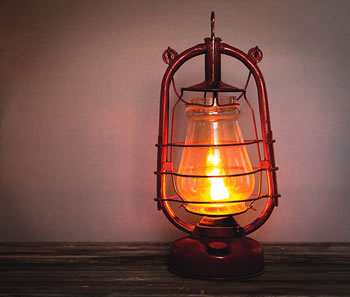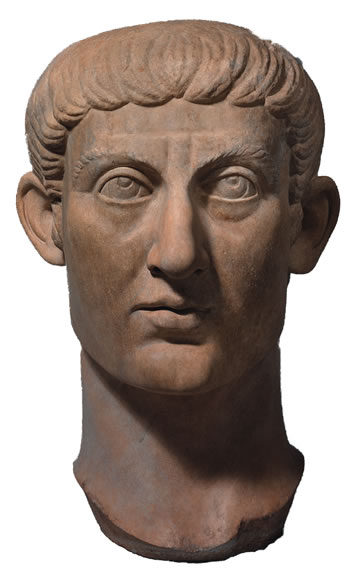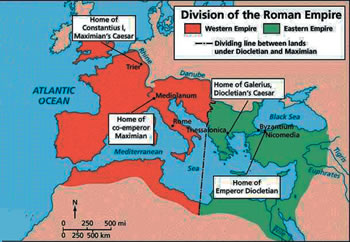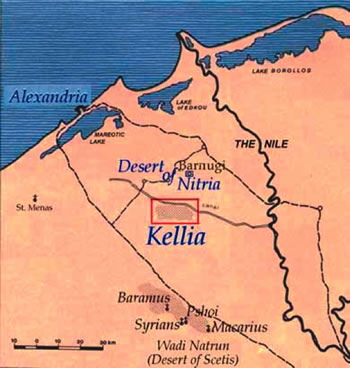A School for Prayer (5)
The Desert Experience (1)
“Give me a word by which I may be saved!”
By Fr Craig Larkin sm, 1943 - 2015
The way of the desert – the beginnings
The flight into the desert
 For the early Christians, the model of prayer was Jesus. Jesus’ prayer – to the Father and in the Spirit – shaped the way the Christians prayed. In time, Christian spirituality and prayer was marked by three aspects:
For the early Christians, the model of prayer was Jesus. Jesus’ prayer – to the Father and in the Spirit – shaped the way the Christians prayed. In time, Christian spirituality and prayer was marked by three aspects:
Martyrdom
Unity with the community of the Church
Eucharist
What must I do ignorer to find fullness of life?
As long as Christians remained a persecuted minority, they could be ‘a lamp in the darkness,’ ‘the salt of the earth,’ ‘a leaven in the lump.’
But a dramatic change took place when the Emperor Constantine allowed Christianity as a public religion, in 312 AD. Christians were no longer a persecuted minority. Massive conversions took place. Christianity lost its cutting edge. It was no longer ‘the leaven in the lump;’ it risked becoming the lump itself.
The Roman Empire was in crisis, and in 320, Constantine moved the capital of the Empire from Rome to Constantinople, in an effort to revive it.
The Roman Empire was now divided into two parts: the Western Roman Empire, with its centre in Rome, and the Eastern Roman Empire, with the capital in Constantinople.

The Emperor Constantine
By the end of the 3rd century, when it was no longer possible to shed one’s blood for love of Christ in ‘red martyrdom,’ radical Christians looked for ‘white martyrdom’ by giving themselves until death to the mystical search for God. Christians who desired to live a totally committed life felt the need to withdraw from the world as they experienced it.

The Deserts
The deserts most populated by the Christians from the 3rd to the 7th centuries were the deserts of Egypt, Sinai, Palestine, Syria and Cappadocia (Asia Minor). Thousands of men and women fled to the deserts, convinced that what they were looking for could not be found in the cities.
The Empire was falling to pieces; the cities were like a ship on the brink of shipwreck; to find salvation, one must jump overboard and swim for one’s life. This is the beginning of the Desert movement
The Desert of Egypt
Our interest is the Desert area of Egypt. There were several reasons for going into the Desert:
a) To move from the cities, where it seemed not possible for Christians to live a radical life of following Jesus;
b) To do battle with the demons, who were considered to be found especially in the desert regions;
c) To avoid the theological controversies of the time and to live quietly in search of God.
Two Desert areas of Egypt:
Scetis and Kellia
“There is a place in the inner desert called Kellia. To this spot those who have had their first initiation and who desire to live a remoter life, stripped of all its trappings, withdraw themselves. The desert is vast, and the cells are separated from one another by a space so wide that no one is in sight of his neighbour, nor can any voice be heard. One by one they live in their cells, a mighty silence and a great quiet among them: only on the Saturday and the Sunday do they come together to Church, and there they see each other face to face. … If by chance any one is missing in that gathering, straightaway they understand that their brother has been detained by some unevenness of body, and they all go to visit him, not indeed all of them together, but at different times, and each carrying with him whatever he may have at home that might seem graceful to the sick.”
“The place called ‘Scetis’ is set in a vast desert, a day and a night from the monasteries on Nitria; and it is reached by no path, nor is the track shown by any landmarks of earth, but one journeys by the signs and courses of the stars. Water is hard to find … Here live men perfect in holiness (for so terrible a place can be endured by none save those of absolute resolve and supreme constancy): yet it is their chief concern to show the loving kindness which they show to one another and towards such as by chance may reach that spot.” (cf. Helen Waddell, The Desert Fathers, Fontana 1965)
The geographical area known as ‘the desert’ was only a symbol of the even more uncharted regions of the human heart. The desert areas became a sort of laboratory in which the Christian experience was examined. Some of the monks were like mechanics of the human psyche: they knew how to take the psyche apart, analyse it, and put it back together again.
They left a map of the heart, with signposts indicating where a person might lose direction and fall into the trap of self-deception, and finally be driven to madness.
Above all, they indicated what needs to be done in order to answer the one big question: “What must I do in order to find fullness of life?”
 Entries(RSS)
Entries(RSS)